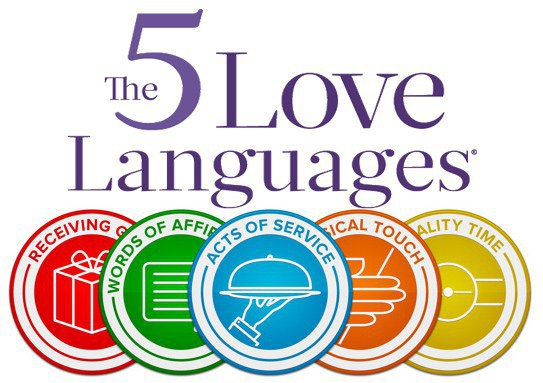Should You Know Your Love Language?

Love means different things to us all. Most of us have experienced the swell of being in love and felt the thud of heartbreak, and as we move through the ups and downs of different relationships we like to think our understanding of love grows. The reality is that, to many people, love is a messy, complicated thing. However, a system has been developed that claims love doesn't have to be that way.
Whether you believe in soulmates or not, there are many questions one can ask when considering why a relationship might be successful or not. Do opposites really attract? Is it all about timing? Are shared interests vital?
Dr. Gary Chapman, author of The 5 Love Languages: The Secret to Love That Lasts, has developed a practical and simple system for improving relationships and increasing partners’ understandings of each other. This system is acclaimed by many users who say that the knowledge gained from his theory has made their relationships more successful. In recent years, there has been a surge in the visibility around his work and today, The 5 Love Languages website boasts that over 15 million users have improved their relationships by taking the Love Language assessment thus far.
The five love languages Dr. Chapman describes are Words of Affirmation, Acts of Service, Receiving Gifts, Quality Time, and Physical Touch. When a user takes the assessment, the results are presented as a score for each language on a scale of zero to 12, zero meaning it has close to no emotional impact, and 12 being the language one utilizes the most. According to Chapman, it is possible that couples may use every love language, but each individual has one primary language. The idea is that upon understanding your partners love language, you are better equipped to show them affection in a way that will make them feel valued and appreciated. Each love language is defined by the following characteristics:
Words of Affirmation: Hearing "I love you" and receiving unsolicited compliments and words of encouragement are more important than anything.
Acts of Service: Those who speak this language want someone to help them out and ease their stress. They want to be served out of love and not an obligation.
Receiving Gifts: Receiving a heartfelt or meaningful gift shows how well one’s partner understands them and what they are willing to do to prove that.
Quality Time: Those who speak this language thrive on being around those they love. They appreciate undivided attention, and deeper connections are formed through sharing time together.
Physical Touch: This language is shown by touches such as hugs, pats, cuddling, and so on. It communicates warmth and safety.
To gain a perspective on my peers take on love languages, I asked two of my friends from the American University of Paris, Theo Bernard and Caroline Harik, to take Chapman’s assessment. Immediately after taking the assessment, I asked them a series of questions relating to their results and their reactions. The outcome was two starkly different perceptions about the usefulness of love languages.
Caroline is 20 years old, a junior visiting student, and currently single.Theo considers there to be no use for his results, revealing, "I’m not going to base any of my actions or relate anything that happens in my life to these five love languages.” He believes the natural course of a relationship will give him the same understanding of his loved ones that the love language assessment would.
In a different light, Caroline explained, "If you’re doing something for somebody, and they’re not appreciating it, or they don’t really care as much, maybe it’s because that’s not a way that they perceive you’re showing love for them.” She follows the idea that learning love languages prevents any misjudgments that can come from partners or friends having love languages opposite to one's own.
Regarding the set-up of the assessment, Theo explained, "I was forced to choose between two options, but neither was me. An option to say no to both would have been better." Others might agree with Theo, finding the test to be too reductive. The idea of being one thing over the other is rigid, but the test tries to simply bring forward words and titles that can help us to see how one another operate more clearly.
Caroline said that she, “never would have quantified it like this,” but she feels that the quantification helps her understand why she reacts to various scenarios in different ways. Being open and addressing problems can put someone in a vulnerable state, and this can scare people away from having important conversations with one another. While the five love languages are not an “end all” solution, they do help facilitate productive discussions and understanding.
Theo is 21 years old, a freshman, and currently in a relationship.There are many taboos surrounding self-help culture, but we are rapidly becoming more perceptive to the idea. Dr. Chapman published The 5 Love Languages: The Secret to Love That Last 1995, and in recent years there has been a resurgence in the popularity of his system. Perhaps this can be primarily credited to mass media, specifically digital journalism and social media. Influencers openness in voicing their personal struggles and give advice based on those experiences, like Jody Steel, Mari Fitness, and Lacey Claire Rogers have helped make conversations around self-help mainstream.
Cosmopolitan, Time, and Women’s Health, among others, have published articles regarding Chapman’s work over the last few years. These articles bring love languages to a new audience, including millennials.
In fact, the book was published before I was born, yet it has withstood the test of time and become the pinnacle of how I approach relationships. Although it was initially designed for couples, it is now used within families, friendships, and couples who are not married. Utilizing research around self-improvement seems to have become a keystone today in developing healthy relationships.









